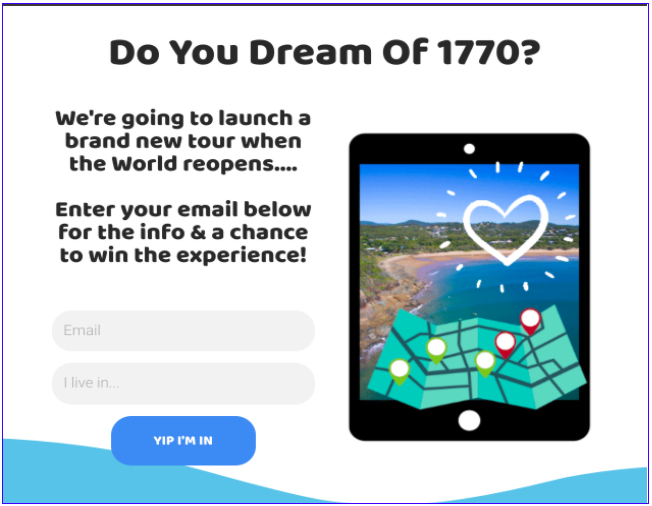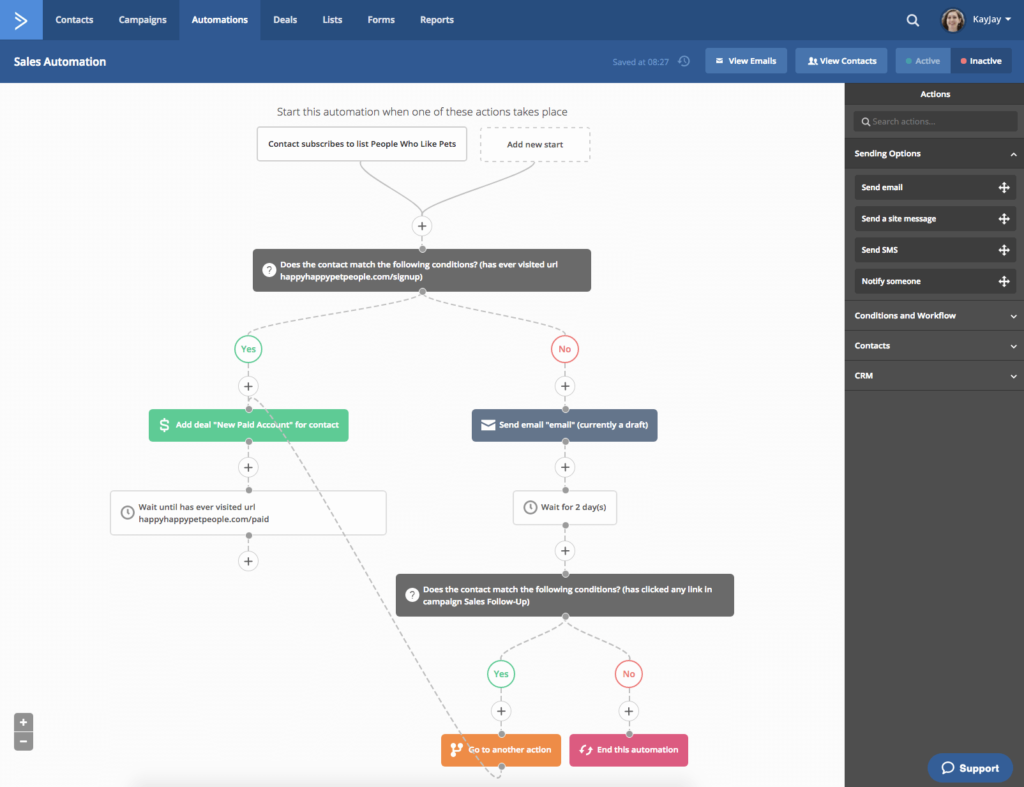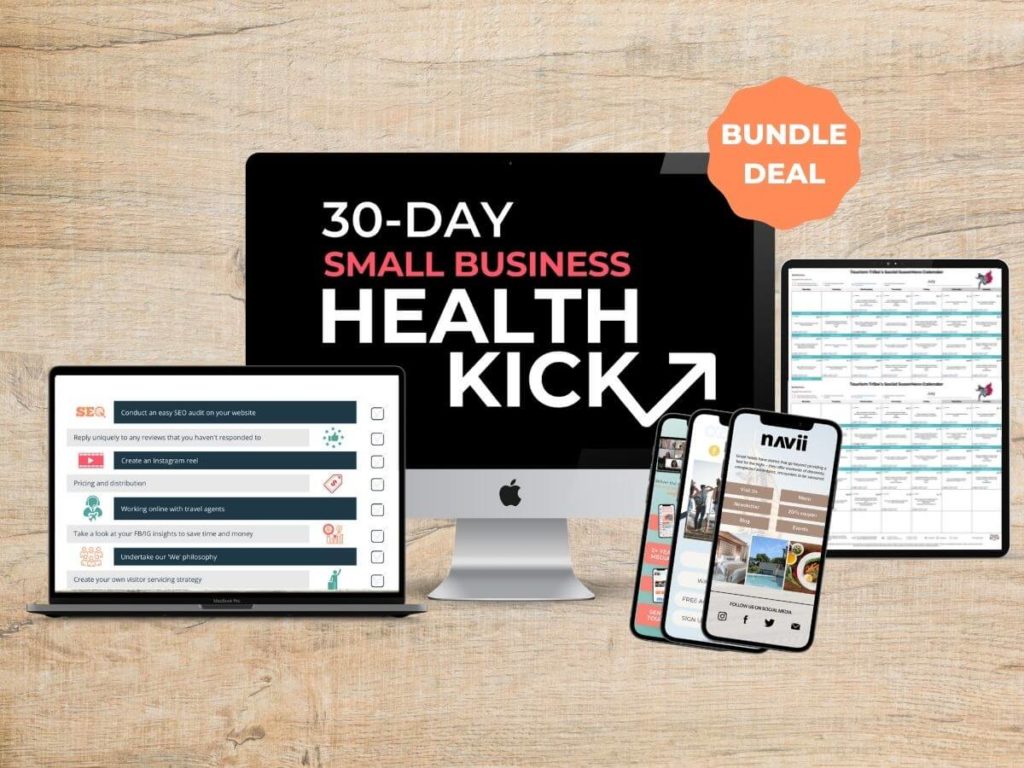Over the last few months, it seems the interest from small businesses in email marketing has really peaked. In every single one of our group coaching calls, we get asked the question about how best to conduct email marketing.
Email marketing – done right – is still one of the highest-converting online sales techniques. But, what is email marketing done right for a small business?
What does “email marketing done right for small businesses” really mean?
In this section, I will try and give you some succinct instructions as to how to get started with email marketing on the right foot. Gone are the days of buying email lists and cold-emailing prospects.
You need a plan, the right tools and then it’s rinse-and-repeat.
1. Not just monthly e-news
The last thing you want to do is collect email addresses with a good’ol “sign up here for our newsletter” box on the bottom of your website. Why? Well, who would sign up for the monthly newsletter of an accommodation business? The first thing that comes to my mind would be to receive an email every month about what’s specials are on for this business…. and truly, why would I do that?
Instead, give your potential clients something extra special against their email addresses. They’re on your site right, therefore they’re considering your product. What could you give them to take away any misconceptions or educate them about what you offer so they come closer to concerting? It could be a value add or the ability to access a great guide about how to spend their day in your region. Below is an example of an ‘opt-in’ box that will get more sign ups than your newsletter (done during covid).

Once people sign up for your great guide (or any golden nugget), you put them in a nurture sequence that delivers the guide and warms them about your destination or offer. You’re educating them about your product, automatically and in a personalised manner.
Your guide could look as cool as this:

2. Segmented email database
Another mistake that irks me as it directly affects your deliverability rate and your conversion rate is sending the same message to your whole email list. This is so 2002. Systems are now geared to allow you to easily send a different message to different people in your database. Segmenting your email list is the key here to being able to send different messages to different groups.
For this to happen, you need an email database, and a segmented one. This word “segmented” might sound very techy, but it’s not. All you need is to categorise (or segment) your email subscribers. Think about the end goal and answer this question: wouldn’t it be great if I could email all the ….. about this special offer.
Now replace the …. by your categories.
Here’s a hint, they could be:
- Past clients
- Website leads
- Families vs couples
- Local businesses
- Media
- People who have not opened by the last e-news
All these need to be categorised/tagged/labelled/grouped/flag/segmented (same meaning, different tool depending on what email marketing automation system works for you) so that you can conditionally-display specific content to them.
Imagine you like wine…. or port… or champagne and that you’ve bought 2 dozens of rosé from a winery. You want said winery to be able to flag categorised/tagged/labelled/grouped/flag/segmented your name against rosé so that when they have new rosé deals on you’re the first to know.
The last thing you want to receive is an email about all the different types of wines, port and champagne! Not only will it affect the ‘deliverability rating’ of the business that sends you the emails, but they won’t get many conversions.

Instead of the boring non-enticing email you, how about this:
Hey Fabie, the last case you bought from us was on [insert last purchase date]. How did you find it? Here’s a special link with a coupon code to try this brand new rosé we thought you’d like.
So apart from your segments, you may realise that the above also called for the {past purchase date} and the {product interest} or {product purchased}. If you’re not into wine, think about the [last date of visit] from your clients. Or their [wedding anniversary month] if you’re into couples packages. To achieve this, you’d also want a custom field (pretty much anything that is not a standard field such as first name, last name, email) to synchronise between your website and your email marketing system.
This is super simple to achieve with the right tools. Most content management systems already have this integration in place.
3. Email marketing automation
Now you know that the monthly e-news on its own is not going to cut it (it may still be a very good strategy to have an e-newsletter, we certainly have a segmented one at Navii) you are probably wondering how you’re going to make those rosé/anniversary/gold nugget guide emails happen?
This is called email marketing automation. Email marketing automation is different from email marketing in that it allows you to send personalised messages (based on segments) automatically and based on the actions that your clients take with your emails, website and anything that is trackable.
Over the last decade, email marketing automation has morphed into marketing automation, and business automation. Basically, you can make any client interaction do anything. E.g. if your client clicks or doesn’t click on the link to download your brochure in your lead magnet sign up, you can automatically:
- task your sales team to call them
- add them to a Facebook audience to target them with ads
- send them another series of email
- send them a text message
- add them to any other system using Zapier or the like
Most of the small businesses we coach and work with at Navii have no idea about the goldmine they’re sitting on. My favourite motto is: if you find your staff or yourself doing the same thing more than once on a computer, you can automate it.
4. No outsourcing
Marketing automation leads me to the final golden rule. No outsourcing.
Gone are the days when you could bring in a consultant to program something for you and not worry about it. Well, maybe that works to fix your fridge or washing machine or tour bus but to be successful in running a small business these days you need to start growing your digital business acumen (or you’re going to have to hundreds of dollars for a consultant to do it for you).
Email marketing automation > marketing automation > business automation must be at the heart of your business. These tools are what will allow you to grow your business and improve your processes so that you can eventually grow your profit and/or have more time for anything you want to pursue in your business. More profit, more time and less stress: isn’t that what we all strive for.
This might sound scary to some, but once you start looking at what you can do from a business perspective and playing with the tools it’s not that hard. It become second nature, just like using your online accounting software. There is no programming required, no big long formulas. These programs are now designed for small businesses.
Here is a visual example of automation to convince you that there is no Java, C++, Google Formulas required to make it work. It’s all drag and drop nowadays.

Where to now?
Are you now ready to improve your email marketing strategies?
There are a gazillion resources online you can start with such as the Mailerlite tips.
We’ve also designed some of our own resources such as our marketing automation package and our email marketing online course. However, if talking it out and getting one on one advice is your thing, start with our consultation service.



